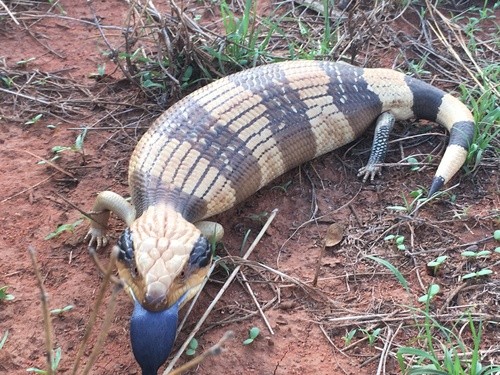Western blue-tongued skink
A species of Blue-tongued skink, Also known as Western bluetongue Scientific name : Tiliqua occipitalis Genus : Blue-tongued skink
Western blue-tongued skink, A species of Blue-tongued skink
Also known as:
Western bluetongue
Scientific name: Tiliqua occipitalis
Genus: Blue-tongued skink
Content
Description General Info
Description
The western blue-tongued lizard (Tiliqua occipitalis), also known as the western blue-tongued skink, is a large skink native to Australia. It is one of six species of blue-tongued lizards found in Australia, though further species are found in New Guinea and Indonesia.
General Info
Lifespan
15-20 years
Diet
Western blue-tongued skink is predominately herbivorous, with a strong preference for plant matter. Primary food consists of assorted leaves, flowers, and fruits, yet it also exhibits opportunistic feeding on soft-bodied invertebrates when available.
Appearance
Western blue-tongued skink is a medium-sized reptile with a stout, robust body shape and smooth, scaly skin. This skink species is predominantly blue-tongued with a dark brown or black body and may display lighter-brown or grey patterns. It has a distinctive short, blunt tail and prominent blue tongue, which it often displays. No significant visual differences are reported between different ages, genders or subspecies of this species.
Behavior
Western blue-tongued skink is predominantly a solitary creature, active during daytime hours. Marked by a specialized foraging behavior, it uses its strong forked tongue to locate meals, primarily soft-bodied invertebrates. Notably, western blue-tongued skink uses its tail as an intimidation strategy while defending its territory, raising it above its body to ward off possible threats. Furthermore, western blue-tongued skink is characterized by a protective 'tail autotomy', allowing it to drop part of its tail, if threatened.
Population
Stable
Scientific Classification
Phylum
Chordates Class
Reptiles Order
Lizards and snakes Family
Skinks Genus
Blue-tongued skink Species
Western blue-tongued skink 